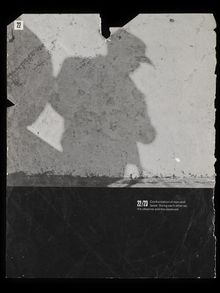| |||||||||||||||||||||||||
ARTIST MONOGRAPHS
|
|
STATUS: Forthcoming | 2/10/2026 This title is not yet published in the U.S. To pre-order or receive notice when the book is available, please email orders @ artbook.com |
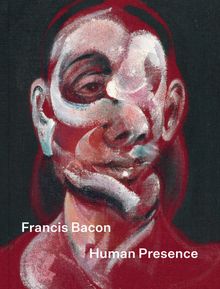 Francis Bacon: Human Presence
Francis Bacon: Human Presence
Published by National Portrait Gallery.
Edited with text by Rosie Broadley. Text by Richard Calvocoressi, James Hall, Martin Harrison, Carol Jacobi, John Maybury, Sophie Pretorius, Gregory Salter, Georgia Atienza, Tanya Bentley.
Featuring works from the 1950s onward, this book explores the genre-defying portraiture of Irish British artist Francis Bacon (1909–92). It is the first publication in over 20 years dedicated to this facet of Bacon’s practice. From his responses to portraiture by earlier artists to large-scale paintings memorializing lost lovers, these selected works showcase Bacon’s life story. In addition to the artist’s self-portraits, sitters include Lucian Freud, Isabel Rawsthorne and his lovers Peter Lacy and George Dyer.
From his renowned triptychs and paintings of ghostly figures to tender and psychologically revealing individual portraits, the figurative works displayed in this publication chart the development of a groundbreaking artist, highlighting the influence of his peers and other artists. Francis Bacon: Human Presence also features illustrated biographies of Bacon and his circle, bringing lesser-told stories to the fore.
PUBLISHER
National Portrait Gallery
BOOK FORMAT
Hardcover, 9 x 11.5 in. / 224 pgs / 130 color.
PUBLISHING STATUS
Pub Date 11/5/2024
Active
DISTRIBUTION
D.A.P. Exclusive
Catalog: FALL 2024 p. 60
PRODUCT DETAILS
ISBN 9781855145498 TRADE
List Price: $49.95 CAD $73.00
AVAILABILITY
In stock
in stock $49.95 Free Shipping UPS GROUND IN THE CONTINENTAL U.S. |
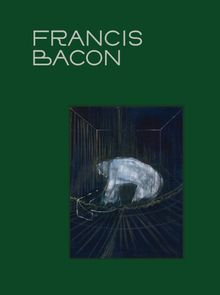 Francis Bacon: The Beauty of Meat
Francis Bacon: The Beauty of Meat
Published by Museu de Arte de São Paulo Assis Chateaubriand/KMEC Books.
Edited by Adriano Pedrosa, Laura Cosendey. Text by Dominic James, Francis Giacobetti, Gregory Salter, Isabela Ferreira Loures, Laura Cosendey, Michael Peppiatt, Paulo Herkenhoff, Richard Hornsey, Rina Arya, Simon Ofield-Kerr.
Francis Bacon is considered one of the most important artists of the 20th century, best known for his distinctive way of portraying human figures. Especially in his male portraits and nudes, the physicality of the body—skin, flesh, muscles—is translated by the artist into thick, oily textures, giving the figures almost abstract shapes. Flashes of teeth, torsos and rib cages underscore Bacon’s visceral philosophy regarding the human form. As the artist famously said: “We are meat, we are potential carcasses. If I go into a butcher’s shop I always think it is surprising that I wasn’t there instead of the animal.”
Beyond their carnal overtones, these paintings unite a wide variety of influences, revisiting canonical themes and combining references to the great masters of painting with Bacon’s own perceptions of the male body. Both his biography and oeuvre were permeated by the presence of his lovers, with whom he established intense and turbulent relationships. Francis Bacon: The Beauty of Meat accompanies the 2024 exhibition at the Museu de Arte de São Paulo, exploring the queer aspects of the artist's work and highlighting how Bacon, with his innovative and impactful painting, paved the way for queer presence in visual culture.
Born in Ireland, British painter Francis Bacon (1909–92) worked in furniture design and interior decoration until 1945, when his career as a painter took off. He enjoyed colossal success in his lifetime, especially as part of a London cohort that included such contemporaries as Lucian Freud and John Deakin.
PUBLISHER
Museu de Arte de São Paulo Assis Chateaubriand/KMEC Books
BOOK FORMAT
Hardcover, 8 x 10.75 in. / 282 pgs / 160 color.
PUBLISHING STATUS
Pub Date 10/22/2024
Active
DISTRIBUTION
D.A.P. Exclusive
Catalog: FALL 2024 p. 106
PRODUCT DETAILS
ISBN 9786557770511 TRADE
List Price: $55.00 CAD $74.00 GBP £50.00
AVAILABILITY
In stock
in stock $55.00 Free Shipping UPS GROUND IN THE CONTINENTAL U.S. |
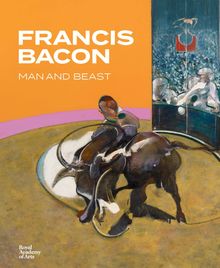 Francis Bacon: Man and Beast
Francis Bacon: Man and Beast
Published by Royal Academy of Arts.
Text by Stephen F. Eisenman, Catherine Howe, Michael Peppiatt, Anna Testar.
Despite his harsh habits of self-editing and a relatively late start, the British painter Francis Bacon produced a considerable body of work that continues to electrify. In 1969, Bacon became interested in bullfighting and painted a series of powerful works that evoke anguish and eroticism simultaneously in the contorted bodies of their beastly subjects. "Bullfighting is like boxing," Bacon once said. "A marvelous aperitif to sex.” Twenty-two years later, a single ghostly bull was the subject of his final painting. Ultimately, Bacon was most compelled by the human animal. His paintings frequently eschew the distinction between man and beast; he renders his human subjects as primitive creatures driven by base instincts such as pain and fear, while his animal subjects exude a strangely human sensibility.
This publication concentrates on the role of animals in Bacon’s work, with experts discussing his varied sources of inspiration, such as Surrealist literature and the photography of Eadweard Muybridge.
Francis Bacon (1909–92) began his career in furniture design and interior decoration until 1945, when his career as a painter took off. He enjoyed colossal success in his lifetime, especially as part of a London cohort that included contemporaries Lucian Freud and John Deakin.
PUBLISHER
Royal Academy of Arts
BOOK FORMAT
Hardcover, 9 x 11 in. / 160 pgs / 114 color / 26 bw.
PUBLISHING STATUS
Pub Date 4/20/2021
Active
DISTRIBUTION
D.A.P. Exclusive
Catalog: SPRING 2021 p. 28
PRODUCT DETAILS
ISBN 9781912520558 TRADE
List Price: $39.95 CAD $55.95
AVAILABILITY
In stock
in stock $39.95 Free Shipping UPS GROUND IN THE CONTINENTAL U.S. |
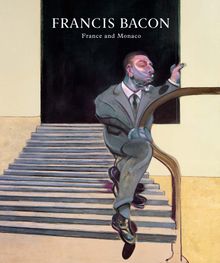 Francis Bacon: France and Monaco
Francis Bacon: France and Monaco
Published by Heni Publishing.
Edited by Martin Harrison. Forward by Majid Boustany. Contributions by Dr. Carol Jacobi, Eddy Batch, Catherine Howe, Dr. Darren Ambrose, Dr. Rebecca Daniels, Dr. James Wishart, Dr. Hugh Davies.
The first in-depth publication to uncover the long relationship Francis Bacon enjoyed with France, Monaco and French culture. Martin Harrison, the foremost expert on Bacon, brings a new light to a somewhat unexpected side of the artist’s life and work. It was in Paris in 1927, at an exhibition dedicated to Picasso, that Francis Bacon grasped his vocation as a painter. In 1946, he moved to Monaco on the French Riviera where he lived for four years, his time in the Principality marking a turning point in his art; with his “popes” series, he became a painter of the human figure. In Paris he befriended artists and intellectuals, such as Giacometti and Leiris, whilst the city would become the setting for the crystalisation of his reputation in 1971 with the retrospective at the Grand Palais. In 1975, Bacon would take a studio in the Marais district. This bilingual publication—co-published by Albin Michel and The Francis Bacon MB Art Foundation—tells of Bacon’s deep ties with France and Monaco, and has been overseen by Martin Harrison, author of Francis Bacon: Catalogue Raisonné.
PUBLISHER
Heni Publishing
BOOK FORMAT
Hardcover, 8.5 x 10.5 in. / 240 pgs / 100 color.
PUBLISHING STATUS
Pub Date 5/15/2017
Active
DISTRIBUTION
D.A.P. Exclusive
Catalog: Publisher Backlist
PRODUCT DETAILS
ISBN 9780956873880 TRADE
List Price: $50.00 CAD $67.50
AVAILABILITY
In stock
in stock $50.00 Free Shipping UPS GROUND IN THE CONTINENTAL U.S. |
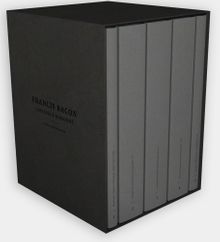 Francis Bacon: Catalogue Raisonné
Francis Bacon: Catalogue Raisonné
Published by The Estate of Francis Bacon.
Edited by Martin Harrison.
Editor Martin Harrison, following his appointment by the Estate of Francis Bacon, has devoted over a decade to the creation of this magnificent publication, the first-ever complete catalogue raisonné of the work of the great British painter. Including many previously unpublished paintings, this five-volume set allows Bacon’s oeuvre to be seen and assessed in its entirety for the first time, with all works reproduced in full color. The only previous Bacon catalogue raisonné was published in 1964, gathering only 37% of Bacon’s ultimate oeuvre, and featuring only 27 color reproductions. Only about half of the 584 paintings that survive are accessible to the public in exhibitions and publications; with Francis Bacon: Catalogue Raisonné, the painter’s entire oeuvre can be seen and assessed for the first time.
The catalogue, containing around 800 illustrations across five clothbound, hardcover volumes, includes three books comprising the study of Bacon’s entire working history, which are bookended by two further volumes: the first including an introduction, chronology and an indispensible index and users’ guide, and the second a catalogue of Bacon’s sketches with an illustrated bibliography. Beautifully produced and printed, the five volumes of Francis Bacon: Catalogue Raisonné are boxed within a handsome cloth slipcase.
“Francis Bacon (1909–92) is widely regarded as Britain’s greatest modern painter. Drawing on low-art sources, including photographs torn from magazines and imagery from films, coupled with a keen awareness of the rich historical tradition of painting stretching back to the Renaissance, Bacon developed a way of portraying the human body which was unique. His mastery of the medium of paint was recognized early. By 1946, the critic Kenneth Clark felt able to state simply: ‘Francis Bacon has genius’.” ––Francis Bacon (Tate Publishing, 2008)
Since 1970, Martin Harrison has published on 19th and 20th century art and photography and curated exhibitions in the UK (Victoria & Albert Museum; National Portrait Gallery; Ashmolean Museum), Italy, the USA and Mexico. He co-curated the Bacon exhibition at the Kunstsammlung Nordrhein-Westfalen, Dusseldorf in 2006, and Francis Bacon / Henry Moore: Flesh and Bone, The Ashmolean Museum, Oxford, 2013. His first publication on Francis Bacon was Points of Reference (Faggionato Fine Art, 1999), while other publications on the subject include In Camera: Francis Bacon – Photography, Film and the Practice of Painting, (Thames & Hudson, 2005) and Francis Bacon: Incunabula, with Rebecca Daniels, (Thames & Hudson, 2008). In 2009 he edited Francis Bacon – New Studies: Centenary Essays, a collection of nine original essays to celebrate the centenary of the birth of the artist.
PUBLISHER
The Estate of Francis Bacon
BOOK FORMAT
Hardcover, 5 vols, 9.5 x 12.25 in. / 1,556 pgs / 800 color.
PUBLISHING STATUS
Pub Date 6/28/2016
Active
DISTRIBUTION
D.A.P. Exclusive
Catalog: FALL 2016 p. 47
PRODUCT DETAILS
ISBN 9780956927316 SDNR40
List Price: $1,500.00 CAD $1,985.00
AVAILABILITY
In stock
in stock $1,500.00 Free Shipping UPS GROUND IN THE CONTINENTAL U.S. |
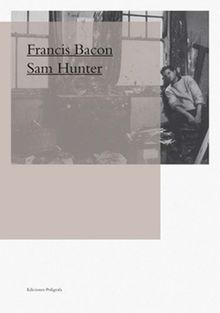 Francis Bacon
Francis Bacon
Published by Ediciones Polígrafa.
Text by Sam Hunter.
British artist Francis Bacon is one of the greatest painters of the twentieth century. His canvases of the 1940s bore witness to the traumatized psychology of the time and bestowed upon him a prominence that did not diminish in the course of his 50-year career. Recent auction sales have confirmed his works as some of the most sought-after of the Modern era.
PUBLISHER
Ediciones Polígrafa
BOOK FORMAT
Hardcover, 8 x 11.25 in. / 96 pgs / 74 color.
PUBLISHING STATUS
Pub Date 6/30/2009
Active
DISTRIBUTION
D.A.P. Exclusive
Catalog: SPRING 2009 p. 109
PRODUCT DETAILS
ISBN 9788434312029 TRADE
List Price: $25.00 CAD $34.50
AVAILABILITY
In stock
in stock $25.00 Free Shipping UPS GROUND IN THE CONTINENTAL U.S. |
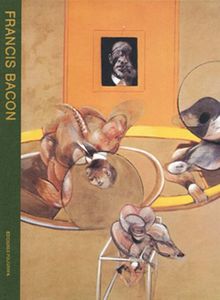 Francis Bacon
Francis Bacon
Published by Ediciones Polígrafa.
Text by Michel Leiris.
PUBLISHER
Ediciones Polígrafa
BOOK FORMAT
Hardback, 8.75 x 11.5 in. / 256 pgs / 240 color.
PUBLISHING STATUS
Pub Date 11/1/2008
Out of print
DISTRIBUTION
D.A.P. Exclusive
Catalog: FALL 2008 p. 168
PRODUCT DETAILS
ISBN 9788434311909 TRADE
List Price: $55.00 CAD $72.50
AVAILABILITY
Not available
STATUS: Out of print | 00/00/00 For assistance locating a copy, please see our list of recommended out of print specialists |
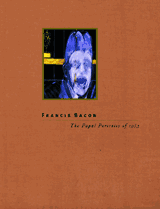 Francis Bacon
Francis Bacon
The Papal Portraits of 1953
Published by Museum of Contemporary Art, San Diego.
Essay by Hugh M. Davies.
PUBLISHER
BOOK FORMAT
Hardcover, 7.75 x 10 in. / 80 pgs / 50 color / 6 bw.
PUBLISHING STATUS
Pub Date 11/2/2001
Out of print
DISTRIBUTION
D.A.P. Exclusive
Catalog: FALL 2001
PRODUCT DETAILS
ISBN 9780934418591 TRADE
List Price: $24.95 CAD $27.50 GBP £22.00
AVAILABILITY
Not available
STATUS: Out of print | 00/00/00 For assistance locating a copy, please see our list of recommended out of print specialists |
